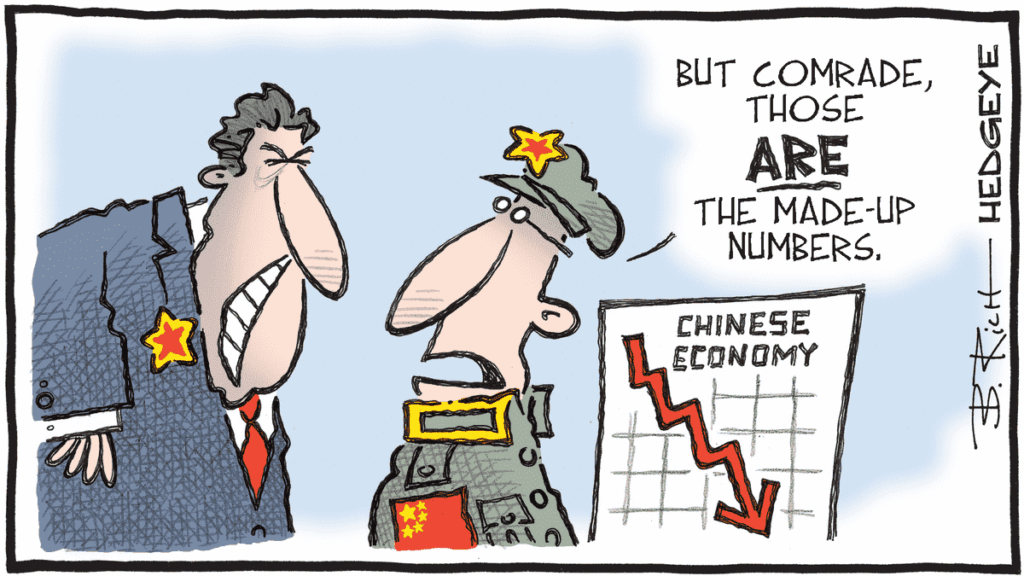
Let’s call it like it is – the markets are impressive. I must admit, I’ve been spending my late nights commenting on the markets for quite a while now, and this isn’t the first time I’m impressed. I’m often amazed by the stupidity of certain reactions, and also by how investors blindly follow the herd without asking a single question. But here we are, early spring, and just a month after nearly getting the chop, I’m once again blown away by how, only six weeks after panicking over their retirement in 20 years, the average investor has already forgotten everything.
Memory wiped
In short, the markets are amazing. The DAX is close to all-time highs – like, every day – and it’s all thanks to the arms industry. Not to mention the new German chancellor stepping up to say he wants to have the MOST POWERFUL ARMY IN EUROPE. So yeah, I don’t know, but let’s just say it’s barely been two months since they were let off the leash – a leash that’s been held tight since June 6, 1944 – and they’re already aiming for European domination again. Is that good news? Who knows. Doesn’t matter – Rheinmetall is soaring, and everyone’s happy. But I digress. My point was: markets are strong. They refuse to fall, even though last night the Magnificent Seven were under pressure, and the volume of puts bought on the sector – just 24 hours before the triple witching – was abnormally high.
No big deal – the indices aren’t giving up even one percent, and the S&P500 posted its fourth straight day of gains, while United Healthcare logged its fourth straight day of losses and its fourth consecutive month down. Meanwhile, the Nasdaq closed in the red for the first time in seven sessions. Exciting, huh? Oh, and we’re talking real moves here: the S&P gained 0.41% while Sir Nasdaq retreated a dignified 0.18%. Why? The Magnificent Seven deflated for various reasons. Meta’s AI engine is delayed. Amazon, Microsoft, and Google? Some hedge fund manager announced he was dumping all his positions in them – and a couple others. Apple? Because Tim Cook’s getting his ears boxed on Truth Social by the American President. Interestingly, Trump went after Cook, not Powell, for once. Yet after Powell’s speech – as useless as a bikini at the North Pole in December – there would’ve been plenty to say. But no, Trump probably remembered the saying: An apple a day keeps the doctor away. But only if you throw it hard enough…
Apple, the Indians, and the $3,500 iPhone
Donald Trump – we all know – wants an iPhone “Made in America”. And clearly, he’s had it with Tim Cook saying: “Yes, but no.” Lately, it’s become clear that Apple plans to manufacture most iPhones in India. And that’s making Trump fume – which he made very clear yesterday from Qatar. The problem is, building an iPhone in the U.S. would mean charging about $3,500 per unit. Let’s just say even hardcore Apple fans would say, “No thanks”… or start selling kidneys.
Apple promised $500 billion in investment in the U.S. and 20,000 jobs… but mostly tech positions, not assembly line work. So, reshoring production sounds nice on paper, but even Cook admits that moving production out of China (to India or Vietnam) will already cost $900 million more this quarter. In short: Apple CAN’T DO WHAT TRUMP WANTS, but that doesn’t stop the President from picking a new scapegoat. Next thing you know, he’ll slap 150% tariffs on Indian exports to force Apple to come home. Apple was down 0.9% yesterday – not enough to make you jump out of bed and grab a Nokia 6210 – but it sure looks like a new trade war front is opening in California.
Trump wants to “bring America back” with home-made iPhones. Cook? He just wants to protect his margins. And caught in the middle: an iPhone that might soon cost as much as a Harley.
And Powell spoke.
While the markets held on with their wild optimism, we also had a mountain of macro data to digest. But before diving into the fabulous world of inflation and retail sales, we have to talk about Jerome Powell’s speech. We’ve been waiting four days for it – time to get it over with. Let’s start with the most important part: Powell said ABSOLUTELY NOTHING that moved the markets one way or the other. Honestly, if Powell were a drug, he’d be Lexomil. If he were an animal, he’d be a sloth – a monkey that doesn’t move but clings to branches so tightly he can sleep without falling. If Powell were a car, he’d be a Renault Zoe – the dullest car of its generation.
The Fed chief pulled out his crystal ball, and what he sees isn’t reassuring: we’re entering an era of more volatile inflation, harder to control. The economic environment has changed since 2020, so the Fed needs to change too. Higher rates, less QE, more turbulence. He also says monetary policy needs to be clearer and more symmetrical – reacting when inflation rises and when it falls too low. Yep, I warned you – boring and not even one step forward on rate cuts. Trump was probably fuming on Air Force One, likely ready to smash his iPhone to the floor. Until he remembered it’ll cost $3,500 in six months.
Bottom line – reading between the lines: the Fed is preparing for a messier world, and it won’t just lower rates to please the markets. The good news for Powell? He’s only got a year left in this mess. Unless Trump finds a reason to fire him and replace him with Warsh.
The Macro Fog
Alongside Powell, we got buried in economic data. Starting with PPI – which dropped 0.5% in April, but the “core” rose 0.4%. Translation: prices are creeping back up, and the first signs of Trump-and-Tariff inflation are starting to show. But markets smiled and moved on, since the headline number came in below expectations.
Retail sales? Flat: +0.1%. Looks like Americans anticipated price hikes by buying their cars early. Result: April was a snooze, except for auto dealerships – who are now sweating bullets.
Jobs? Nothing to see here. 229,000 unemployment claims: steady.
In short: a US consumer starting to cough, inflation doing the splits, and a Powell talking about constant chaos. Feels like an economic reboot of The Twilight Zone. Yet, in the end, the markets were up. Solid.
Told you from the beginning: there’s reason to be impressed.
Just like the macro data above, let’s look at Walmart’s quarterly earnings. Solid numbers in Q1 – beat expectations, sales up, guidance reaffirmed. So WHY did the stock open down 5% Thursday morning?
Answer: tariffs. They’re making forecasts a mess. The CFO talks about “great uncertainty” – which in corporate speak means “we have no clue, fingers crossed.” Imports are more expensive, so: “PRICES ARE GOING UP” – especially electronics, toys (i.e., everything from China), and even bananas (thanks, Costa Rica tariffs).
Walmart’s trying: sourcing local, tweaking materials, raising prices discreetly – but with margins as thin as a receipt, there’s no miracle cure. If tariffs return at “full power,” it’ll hurt. Just gotta pray for a miracle with Xi & friends.
The stock eventually rebounded, closing more or less flat.
When I say this market is solid, I mean it’s REALLY solid.
And what about Asia?
Friday morning in Asia felt like a “hangover after last night” vibe. Japan got hit with a -0.7% GDP drop (expected: -0.2%), and naturally, the Nikkei slid. The economy isn’t moving forward, exports are down, local consumption is asleep, and the BoJ will have to stay soft on rates. Recession is already being talked about — it’s kind of like Godzilla is at the gates of Tokyo but hasn’t quite entered the city yet. In Hong Kong, Alibaba is wrecking the party with revenue below expectations and its cloud division running on empty. Result: the stock fell 5%, JD.com followed with -2%. Luckily, NetEase is saving face with a +15%. In China, indices slipped a bit despite the weekly rebound thanks to the US/China tariff pause. But markets want something solid, not temporary. In short, Asia is on a rollercoaster, eyes fixed on Washington and calculators stuck on “inflation, growth, tariffs.” The Nikkei was down 0.25%, Hong Kong 0.94%, and China 0.5%.
As for oil, it’s the same old story: “we’re allowing ourselves to think a deal between the Americans and Iranians MIGHT be signed.” So, there’d be more oil on the market and prices should drop. The barrel is at $61.73, and it’s worth noting that the guys at Goldman came up with a new brilliant idea. They decided to “decode” Trump’s social media posts to figure out what barrel price Trump wants. I guess that idea came from AI — no human thought process could be that crazy. Anyway, the result of Goldman Sachs’ social brainstorming is that Trump wants a barrel price between $40 and $50 to please consumers, but still wants it higher because American producers stop drilling when prices dip below $65. We’re not done laughing yet, as we can assume their next analysis will be dumpster-diving at the White House to guess if Bitcoin will hit $150,000 or not. Meanwhile, gold nudged up a bit to $3,214, and Bitcoin is at $104,000 awaiting the next Goldman Sachs lieutenant’s investigation.

On the side of brand-new news…
Otherwise, the Footlocker/Dick’s Sporting Goods deal is now official. The Wall Street Journal clearly has some solid sources—once again. Meanwhile, Coinbase still had a headache after celebrating its entry into the S&P 500, only to be hit hard by reality. BAM! Two bombs in 24 hours. First, a cyberattack that could cost them up to $400 million. Then, an SEC investigation for possibly inflating their user numbers a bit too much. Result: -6%, layoffs, and a tarnished image in a flash. Honestly though? Doesn’t the SEC have better things to do than go digging through old skeletons???
Also, Trump is wrapping up his Middle East tour, and the outcome is remarkable. The American President signed deals left and right and will be bringing billions back to the U.S. It’s simply the largest foreign investment commitment ever secured by an American president. No kidding. Even Wall Street nearly spat out its coffee.
UnitedHealth plunges 11%, worst performance on the Dow Jones, as the U.S. Department of Justice starts snooping around its Medicare Advantage business. In plain English: suspected insurance fraud. The WSJ drops the story (without any official source), and UnitedHealth cries foul, calls it a “deeply irresponsible” article, and swears they’ve received nothing from Washington. But hey… when the market panics, there’s usually some smoke, and it looks like the DOJ is seriously on their tail. And in Switzerland, as we already know, Holcim is packing its bags for North America: its subsidiary Amrize will be listed on the Swiss Stock Exchange at the end of June, while also targeting a listing in New York. On day one, it’ll join the SMI and SLI, temporarily bumping the SMI up to 21 members. But don’t panic—it’ll be revised in September. Basically: a spin-off, with a big $11.7 billion business, run from Chicago… but made in Zug.
Numbers of the day
On the data front, we’ve got the Trade Balance in Europe, import and export prices in the U.S., and the University of Michigan numbers giving us an idea of the American consumer’s mood. Even though—let me repeat this for the thousandth time—this number is bogus and barely reflects reality. But since everyone watches it like it’s the Second Coming, I won’t start a debate! On the corporate side, we’ll see Richemont’s results this morning, along with Swiss Re. The rest isn’t too relevant for this triple witching Friday, where most media believe that “given the volume expected today,” it could impact the longevity of the Bull Market. Just like every expiration date. What we really hope is that when Trump returns from the Middle East, he doesn’t spiral into an existential crisis on social media—that would truly be the biggest threat to the Bull Market’s sustainability.
For now, futures are down by 0.03%, and that’s super exciting. Volatility is at 17.83%, and the Greed & Fear Index sits at 69. Still firmly in bull territory…
Have an excellent day—especially if you’re out sailing on Lake Geneva—and a great weekend—especially if you’re out sailing on Lake Geneva—and we’ll meet again Monday morning, same time, same place!
Stay strong and see you Monday!

